Here’s what to see in the night sky this month…
Jupiter finally fades from view this month but it goes out in style, attended in the west after sunset by brilliant Venus and, at the beginning of the month, by a slender crescent Moon. Mars lingers in the starry sky of Scorpius and Sagittarius, and finally starts to move eastward and pull away from Saturn and Antares. And the Sun reaches the September equinox and marks the changing of the seasons. Here’s what to see in the night sky this month…
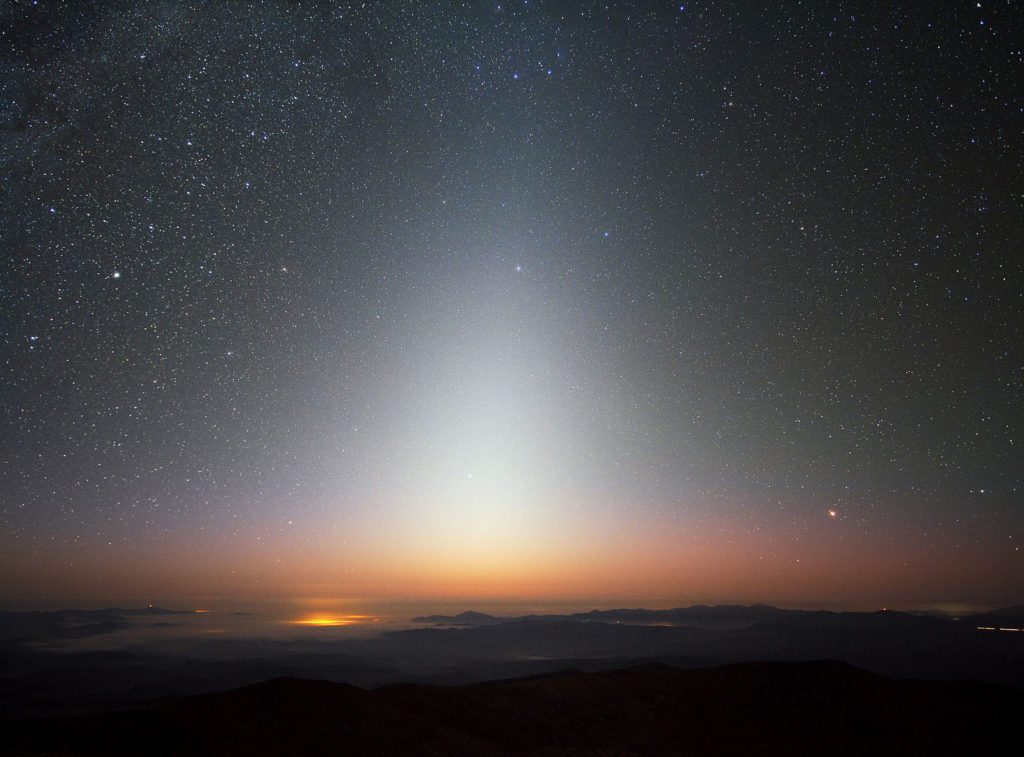
The zodiacal light as seen from La Silla, Chile (credit: ESO).
1 September. New Moon, 9:03 UT
1 Sept. An annular solar eclipse is visible in a narrow band across central Africa.
2 Sept. The planet Neptune reaches opposition and rises in the east as the Sun sets in the west.
3 Sept. Look in the western sky after sunset for a very slender crescent Moon, brilliant Venus, and fading Jupiter arranged in a photogenic diagonal. Observers in the southern hemisphere will also see Mercury join the show (see below).
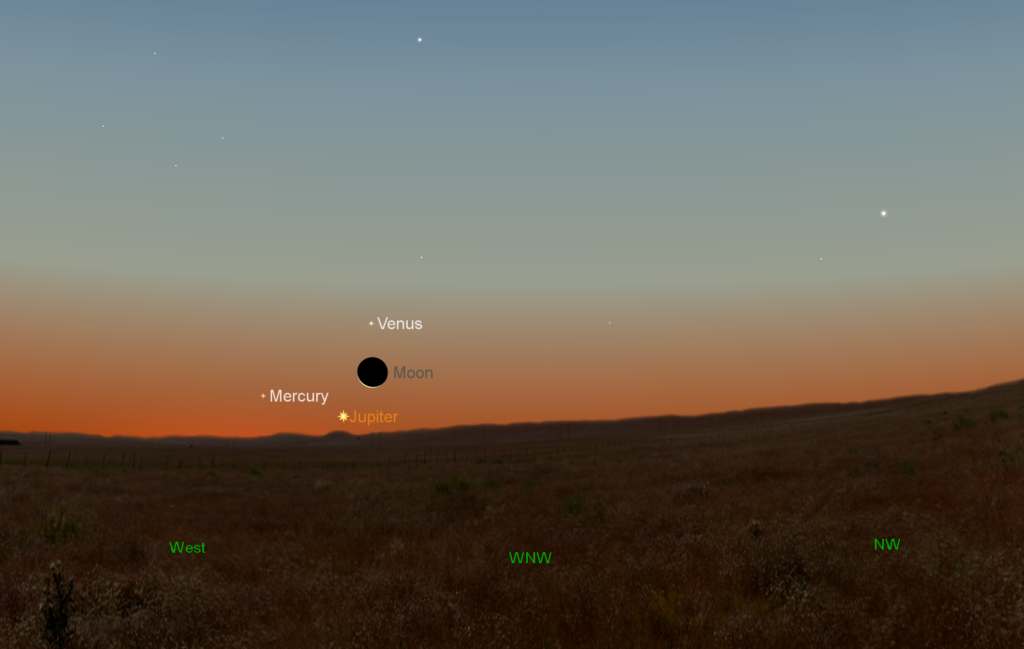
Mercury, Venus, Jupiter, and the waxing crescent Moon as seen in the western sky after sunset from 35 degrees SOUTH latitude on Sept. 3, 2016.
9 Sept. Look for the waxing crescent Moon near the bright star Antares and the planets Saturn and Mars. The congregation is visible well over the southern and southwestern horizons for northern-hemisphere observers. In the southern hemisphere, the spectacle is visible nearly overhead. Mars moves eastward this month into Sagittarius and fades from magnitude -0.3 to +0.1. The ochre-hued planet still outshines Saturn and Antares through September.
9 Sept. First Quarter Moon, 11:49 UT
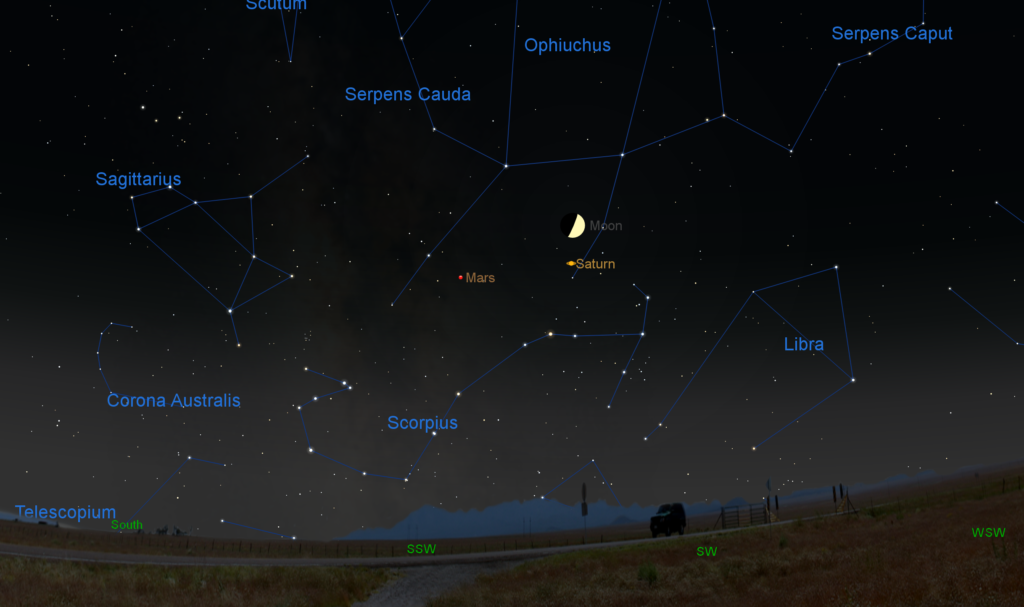
The nearly first-quarter Moon joins the bright star Antares in Scorpius and the planets Mars and Saturn on September 8, 2016 as seen looking southwest at 9 pm local time.
12 Sept. Mercury reaches superior conjunction and is lost in the glare of the Sun.
15 Sept. Look for the planet Neptune about one degree south of the nearly-full Moon.
16 Sept. Full Moon, 19:05 UT
16 Sept. Observers in Europe, Africa, Asia, Australia, and New Zealand will see a penumbral eclipse of the Moon. The maximum eclipse occurs at 18:54 UT and extends for nearly 2 hours before and after. This is not a total lunar eclipse, so the Moon will not fully darken, but the deep penumbral shadow will be visible. More information about this eclipse at this link.
22 Sept. The Sun crosses the celestial equator moving south. This is the September equinox. It marks the beginning of autumn in the northern hemisphere and the beginning of spring in the southern hemisphere.
23 Sept. Last Quarter Moon, 9:56 UT
26 Sept. After putting on a splendid show over the past many months, Jupiter reaches superior conjunction with the Sun. It will reappear in the morning sky in the first weeks of October.
27 Sept. The bright star Regulus has reappeared in the morning sky and lies just 6° from the waning crescent Moon.
28 Sept. Look for the planet Mars just 1.5° south of the Lagoon Nebula, M8, one of the brightest emission nebulae in the sky.
28 Sept. Mercury reaches greatest western elongation, about 18° from the Sun. Northern observers can look for the planet low on the eastern horizon an hour before sunrise.
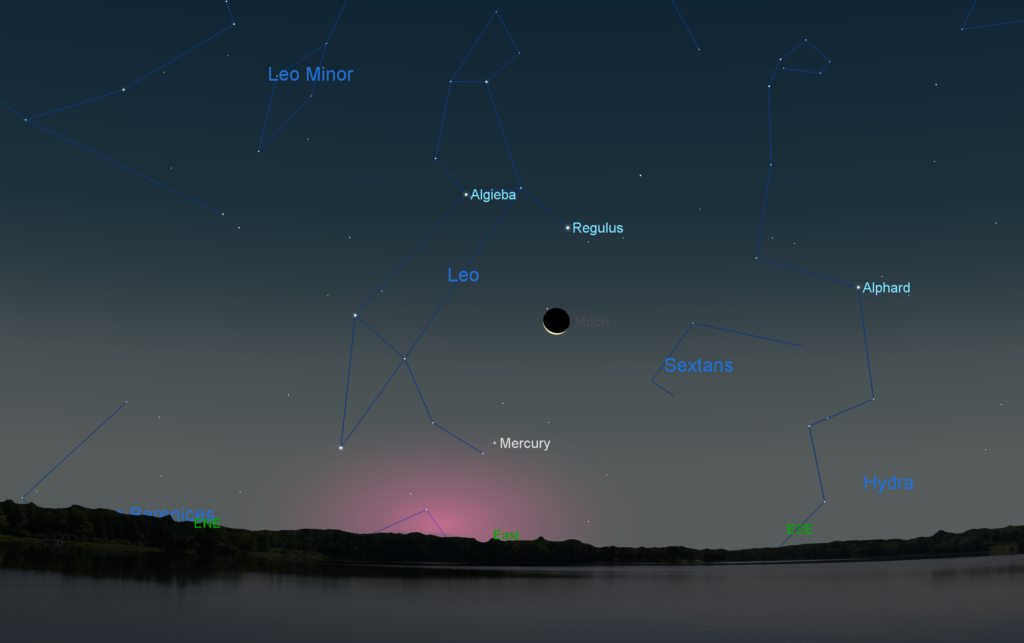
Mercury and the Moon in the eastern sky before sunrise on Sept. 28, 2016. The constellation Leo and its brightest star Regulus also reappear in the eastern morning sky.
29 Sept. This is the time of year to look for the zodiacal light in the hours before dawn. This eerie white pyramid of light is caused by sunlight scattered off tiny particles floating around the plane of the solar system. Read more about the zodiacal light in this old article from One-Minute Astronomer…
By
(Sky images and maps created with Sky X by Software Bisque).

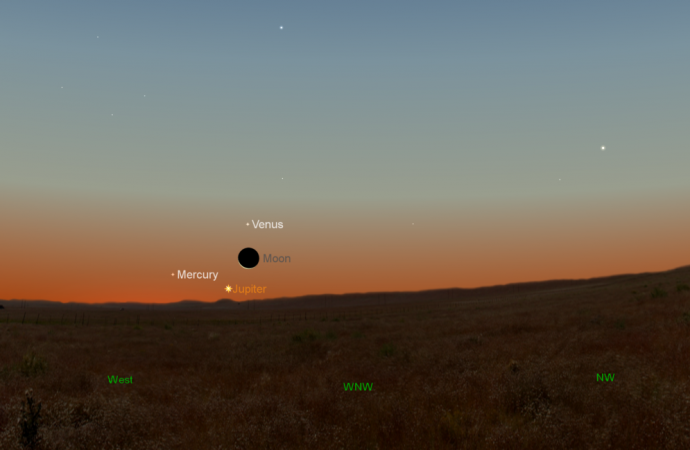































Leave a Comment
You must be logged in to post a comment.